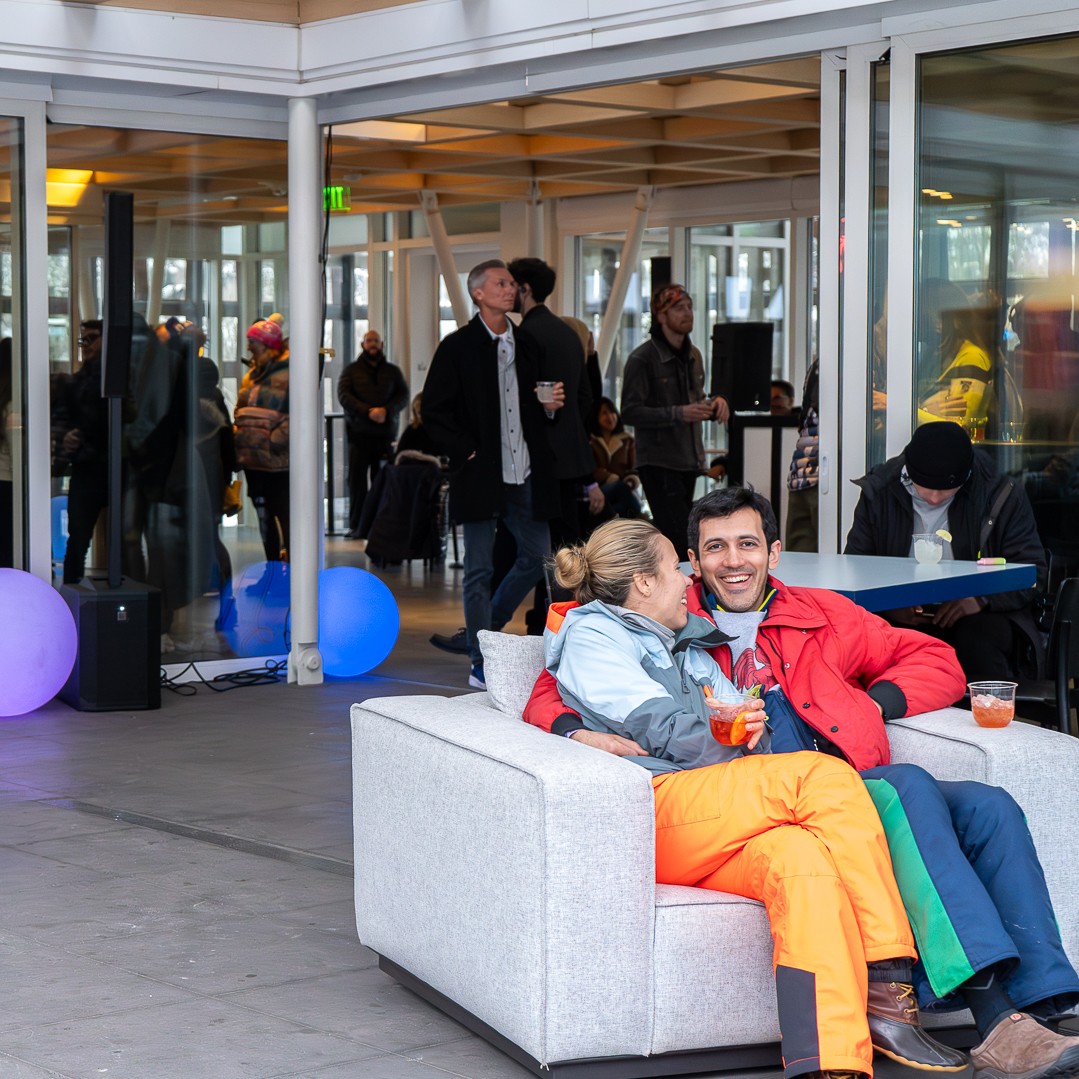Aspen Art Museum
- Join us on May 15 for engaging presentations by our esteemed 2024 Artist Fellowship recipients!
- Categories
- All events
- Talks and Lectures
- Member Events

- For more information on how you can join the AAM, please visit the Street Level Visitor Information Desk, inquire in the Shop, or call 970.925.8050.

- The Rooftop Café is committed to sharing real farm-to-fork experiences with the Roaring Fork Valley. Visit us today!

- Aspen Art Museum is an artist-founded institution dedicated to supporting artists in the development of bold ideas to shape our museum and the field of art today.
John Chamberlain
John Chamberlain (1927–2011) was born in Rochester, Indiana. In 1931 he moved to Chicago with his mother after the divorce of his parents. He would spend most of his childhood there, until, at 16 he joined the US Navy, serving for three years aboard an aircraft carrier. Later, Chamberlain attended the Art Institute of Chicago on the G.I. Bill, and in 1955 he entered Black Mountain College where he studied with the poets Charles Olson, Robert Creeley, and Robert Duncan. The experience would galvanize his interest in language, an intrinsic part of his aesthetic. In 1956 he moved to New York and soon created his first sculpture made from automobile body parts, titled Shortstop. His work would achieve critical acclaim by the early 1960s, placing him at the forefront of the American vanguard as he intuited the gestural force of Abstract Expressionism in three-dimensions. Chamberlain’s work from this period also touched on the industrial ethos of Minimalism and the ready-made spirit of Pop Art, conjoining the three movements in a single, elastic oeuvre. He often said of his process, “it’s all in the fit,” and his intent to finding the right “fit” remained consistent through explorations of materials ranging from galvanized steel, urethane foam, mineral-coated Plexiglas, and tin foil as well as major works in filmmaking, photography, and printmaking.
Over the six-decades of his prolific career, Chamberlain established studios in New York, New Mexico, California, Connecticut, and Florida, where he maintained an 18,000 square-foot studio in Sarasota. On Long Island’s east end, where he lived and worked from 1991 to his death in 2011, he established a massive studio and archive located on Shelter Island. John Chamberlain has been the focus of three major retrospectives including the Solomon R. Guggenheim Museum in 1971 and 2012, respectively, and the Los Angeles Museum of Contemporary Art in 1986, for which the publication, John Chamberlain: A Catalogue Raisonné of the Sculpture 1954–1985, was produced. He has received numerous honors including the Skowhegan Medal for Sculpture, ME, and the Lifetime Achievement Award in Contemporary Sculpture from the International Sculpture Center, Washington, D.C., both in 1993; Gold Medal from the National Arts Club, 1997 and Distinction in Sculpture Honor from the Sculpture Center in 1999, both in New York; Lifetime Achievement Award from the Guild Hall Academy, East Hampton, NY; and a Doctor of Fine Arts, Honoris Causa from the College for Creative Studies, Detroit, MI. His art is represented in esteemed museum collections across five continents.
Over the six-decades of his prolific career, Chamberlain established studios in New York, New Mexico, California, Connecticut, and Florida, where he maintained an 18,000 square-foot studio in Sarasota. On Long Island’s east end, where he lived and worked from 1991 to his death in 2011, he established a massive studio and archive located on Shelter Island. John Chamberlain has been the focus of three major retrospectives including the Solomon R. Guggenheim Museum in 1971 and 2012, respectively, and the Los Angeles Museum of Contemporary Art in 1986, for which the publication, John Chamberlain: A Catalogue Raisonné of the Sculpture 1954–1985, was produced. He has received numerous honors including the Skowhegan Medal for Sculpture, ME, and the Lifetime Achievement Award in Contemporary Sculpture from the International Sculpture Center, Washington, D.C., both in 1993; Gold Medal from the National Arts Club, 1997 and Distinction in Sculpture Honor from the Sculpture Center in 1999, both in New York; Lifetime Achievement Award from the Guild Hall Academy, East Hampton, NY; and a Doctor of Fine Arts, Honoris Causa from the College for Creative Studies, Detroit, MI. His art is represented in esteemed museum collections across five continents.
Related Exhibitions
Museum admission is
free courtesy
Amy & John Phelan
free courtesy
Amy & John Phelan
- Aspen Art Museum
- 637 East Hyman Avenue
- Aspen, Colorado 81611
- t: 970.925.8050
- f: 970.925.8054
- info@aspenartmuseum.org
Admission to the AAM is free courtesy of Amy and John Phelan
The AAM’s exhibitions and programming are FREE and accessible thanks to our members! Become a member today!
| Hours |
|
Tuesday–Sunday, 10 AM–6 PM
Closed Mondays
|
© 2024 Aspen Art Museum
General operating support is provided by Colorado Creative Industries. CCI and its activities are made possible through an annual appropriation from the Colorado General Assembly and federal funds from the National Endowment for the Arts.



General operating support is provided by Colorado Creative Industries. CCI and its activities are made possible through an annual appropriation from the Colorado General Assembly and federal funds from the National Endowment for the Arts.













